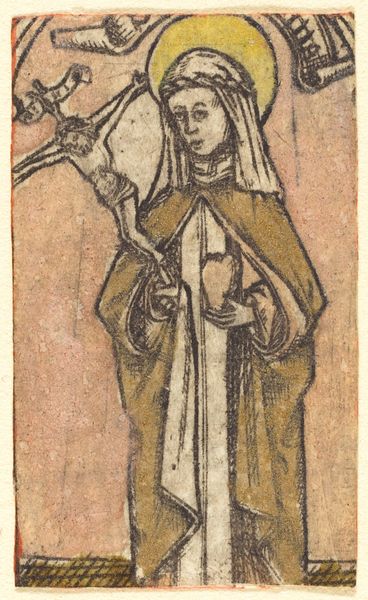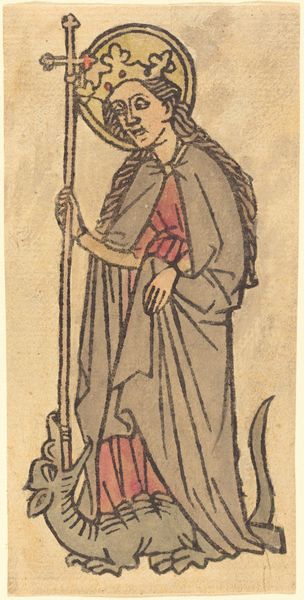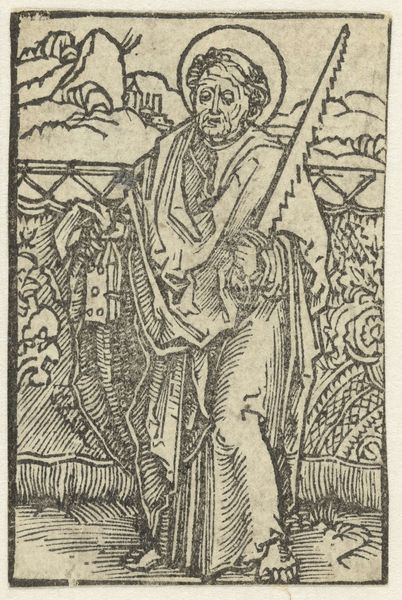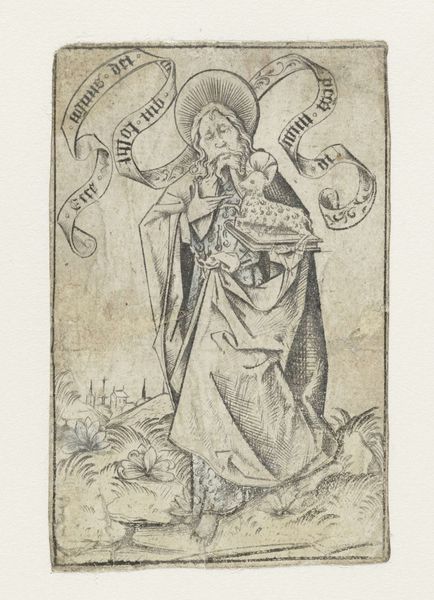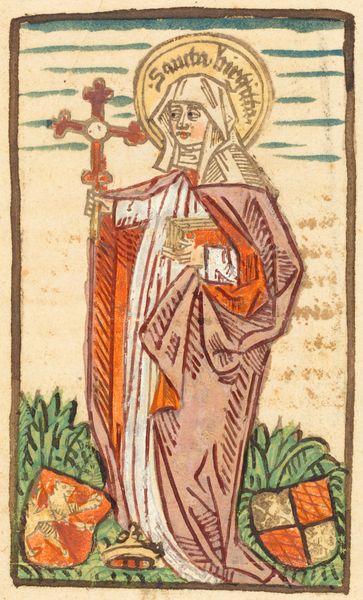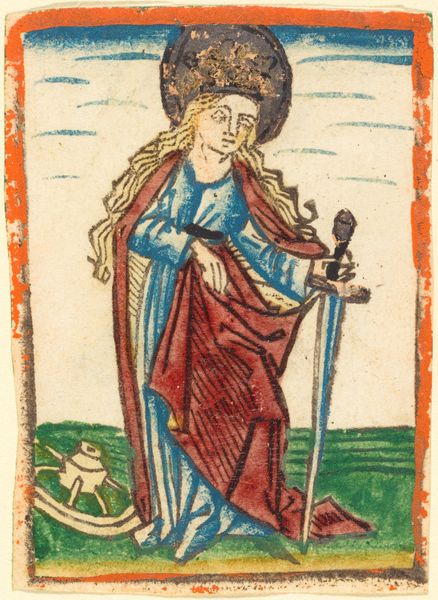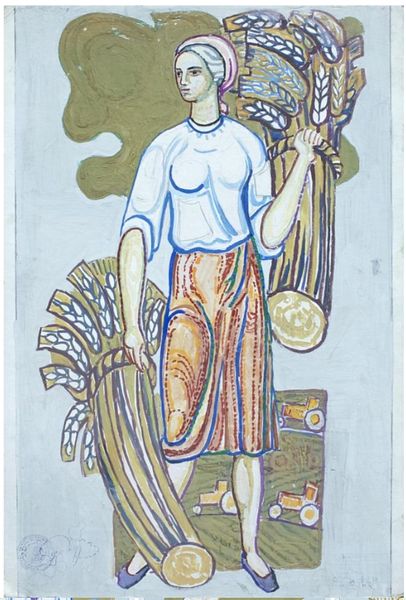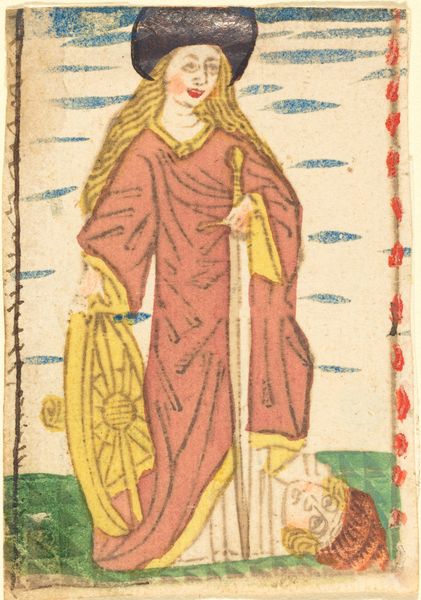
drawing, tempera, ink
#
drawing
#
medieval
#
tempera
#
figuration
#
form
#
ink
#
line
Dimensions: height 59 mm, width 37 mm
Copyright: Rijks Museum: Open Domain
Editor: This is “Heilige Agnes,” or “Saint Agnes,” a tempera, ink, and drawing piece created sometime between 1463 and 1500 by Meester van de Olijfberg uit de Verzameling Dutuit, which I think translates to Master of the Mount of Olives from the Dutuit Collection. There’s something really charming about its simplicity and the directness of the line work. How would you interpret this work from a historical perspective? Curator: Considering its creation period, the late Medieval era, this work embodies a crucial function of art: religious instruction and reinforcement of cultural values. The stylized lines and relatively simple composition are typical of the period's approach to making religious figures legible to a largely illiterate population. We need to see it within its socio-political environment. Editor: Could you expand on the idea of cultural values conveyed through imagery? Curator: Absolutely. Notice the lamb, Agnes’ attribute symbolizing her purity and sacrifice. The crown suggests her martyrdom and saintly status, important attributes that are emphasized to promote emulation by the contemporary population. Consider the act of seeing itself; religious art provided visual models for behavior and belief in a society steeped in faith. What do you think about its purpose beyond a visual representation? Editor: So, it's less about artistic expression and more about its function within a belief system and community. I hadn't considered the active role it played in shaping viewers’ perspectives! Curator: Exactly. The work is shaped by the institution of the church and religious belief, acting almost as a tool within these contexts. It encourages us to look beyond mere aesthetics and understand how artworks historically shaped societal norms and perspectives. Editor: I’ll never look at religious art the same way. It makes you wonder about art’s public role then, compared to how we view it now. Thanks for the insight!
Comments
No comments
Be the first to comment and join the conversation on the ultimate creative platform.
